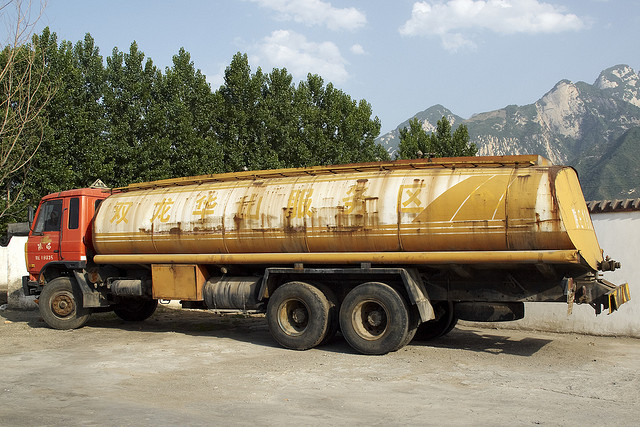An oil tanker parked in front of Mount Hua.
Of all the face-offs in history, among the best known would have to be the one captured in the iconic 1989 photo of Tank Man, the solitary Chinese pro-democracy protestor blocking military tanks in Beijing’s Tiananmen Square. Now, with China emerging as one of the world’s largest energy consumers and importers, the country might be in for more showdowns. Only these will be on a geopolitical rather than human scale.
China’s oil, gas, and coal fields are hardly barren. The nation produces more oil and gas than any other country in the Asia-Pacific region and more coal than any other country in the world, according to the Energy Information Administration.

